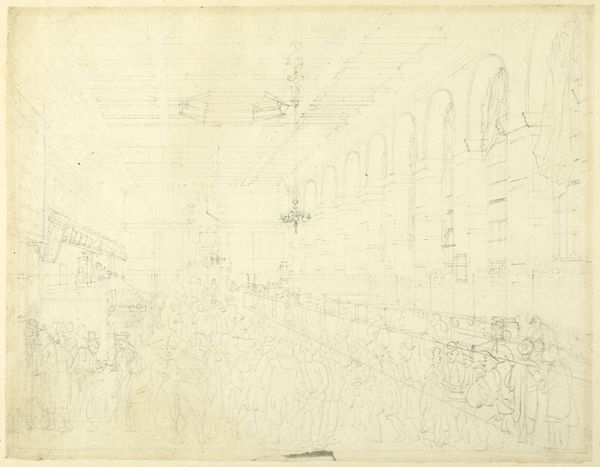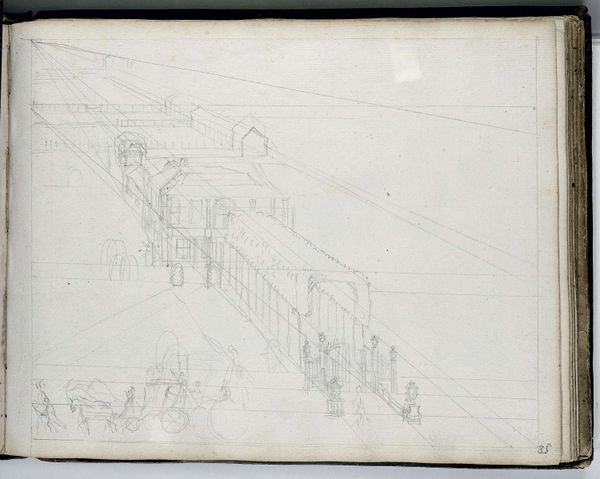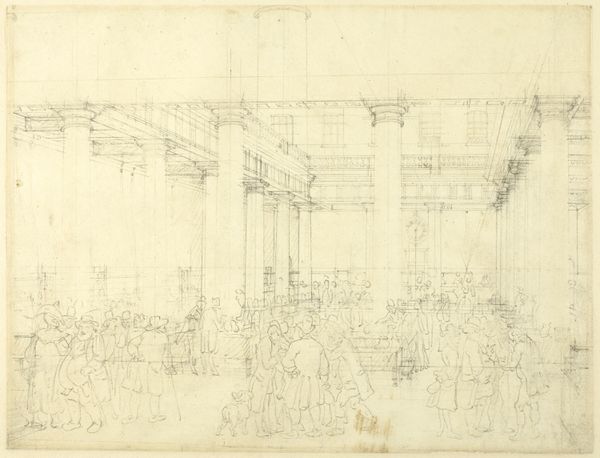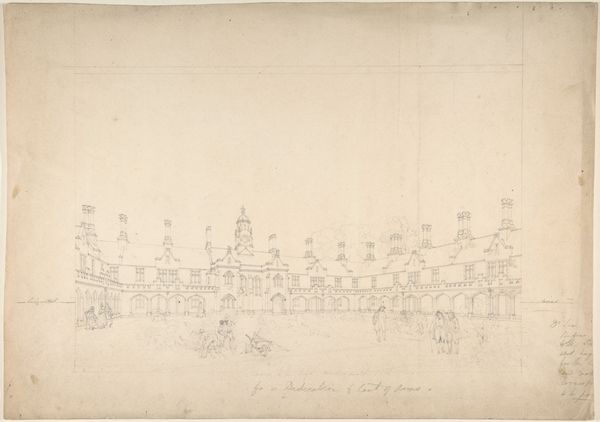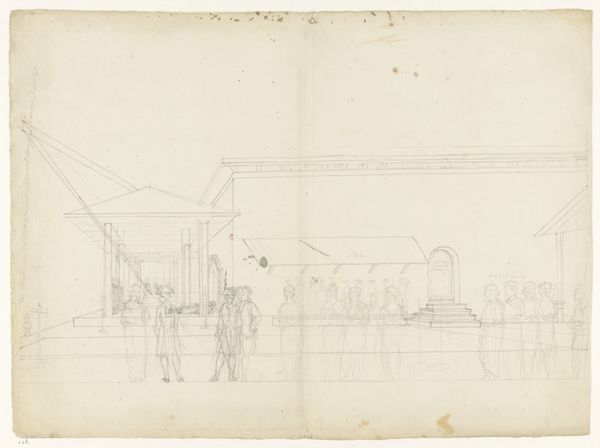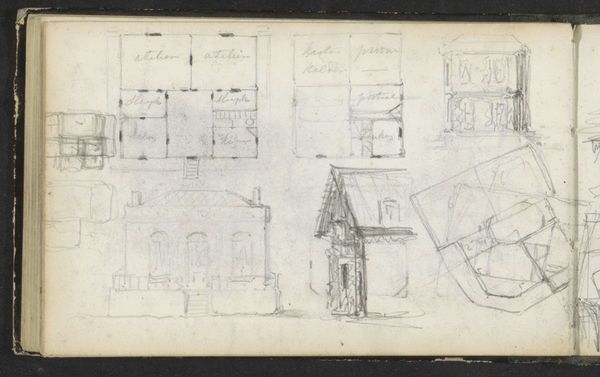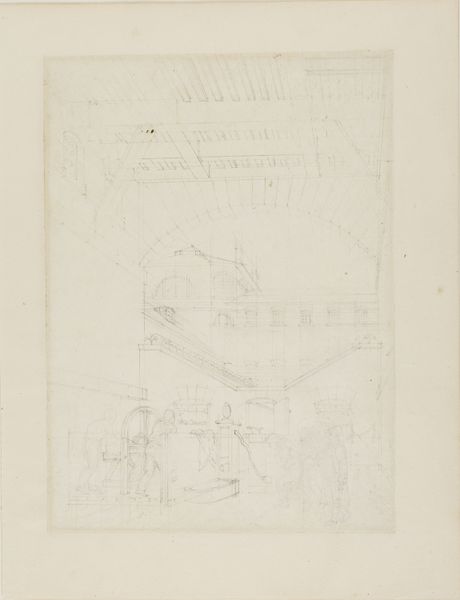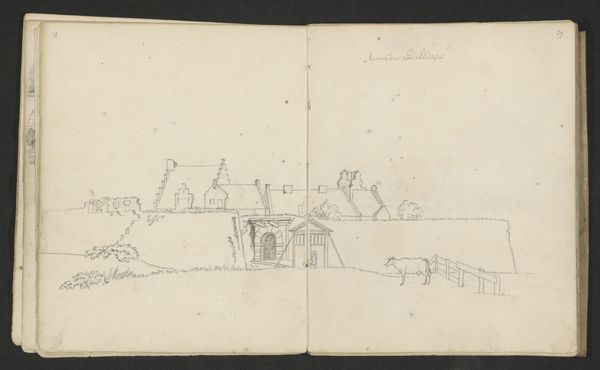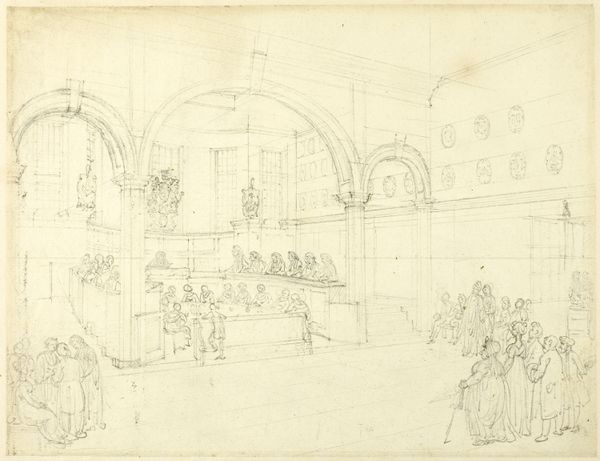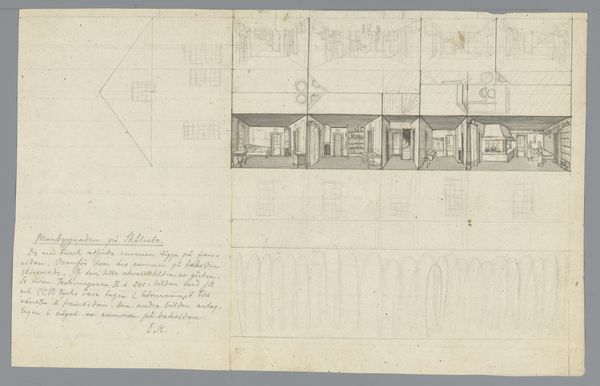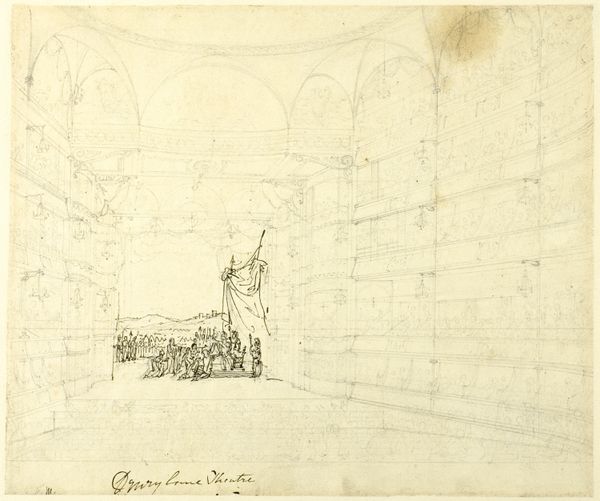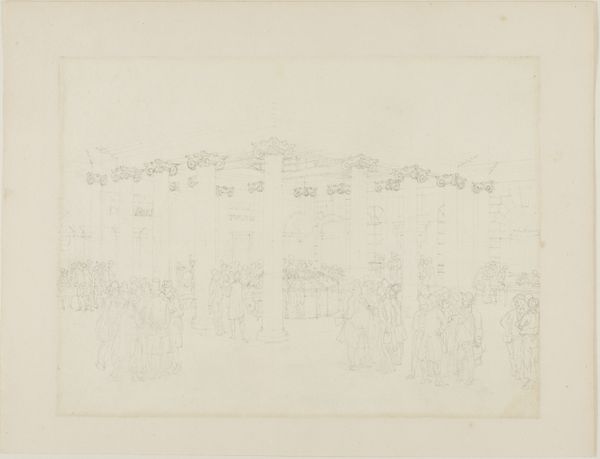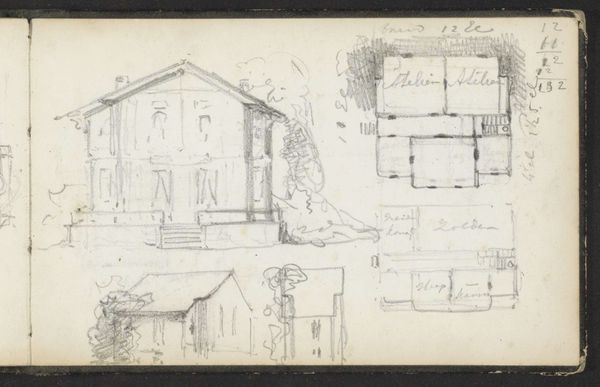
drawing, pencil
#
drawing
#
landscape
#
classical-realism
#
coloured pencil
#
pencil
#
cityscape
Dimensions: height 220 mm, width 280 mm
Copyright: Rijks Museum: Open Domain
Curator: Immediately, I'm struck by the stark contrast in the portrayal of space. There’s this ordered, almost clinical perspective overlaying the softer elements, giving the whole scene a detached feeling. Editor: That is a good way to frame my first impression of Jan Brandes’ "Het landgoed van Brandes bij Batavia" dated 1787-1808, which seems to be rendered in pencil and perhaps some coloured pencil. The entire composition appears as though constructed, not necessarily observed directly from life, the architecture rigid behind what look like carriages approaching a kind of grand entrance. It’s a fascinating intersection of power and place. Curator: Exactly. I read the linear framework itself almost as a visual symbol of colonial planning and control. Brandes was a minister and artist within the Dutch East India Company’s world. Editor: So, the careful drawing isn't simply about accurately portraying space. The underlying structure becomes a symbolic device that speaks to broader socio-political dynamics. I'm also wondering how Batavia itself becomes a signifier here – a potent image of overseas commerce and a staging point in this colonial enterprise? Curator: Indeed. We also need to look into this Brandes Estate—was it acquired legitimately, or taken forcefully? Either would suggest that the European colonists have successfully implemented systems and methodologies within this new society to not just inhabit the location, but re-imagine its own socio-political and economical infrastructures. Editor: And then we need to consider these symbols themselves: the horses, carriages, gate—these aren't mere elements, but also about ownership and division of class that represent a colonial ruling apparatus operating from Batavia and its surrounding locale. Curator: Precisely, Brandes is telling a narrative not only through what he shows, but also what he implies. We have the privilege here of considering, in retrospect, how this all has played out. Editor: It’s that interplay between imposed order and subtle indicators of social structure which really elevates this image. You are reminded how powerful even sketches such as this, seemingly observational, are charged.
Comments
No comments
Be the first to comment and join the conversation on the ultimate creative platform.
